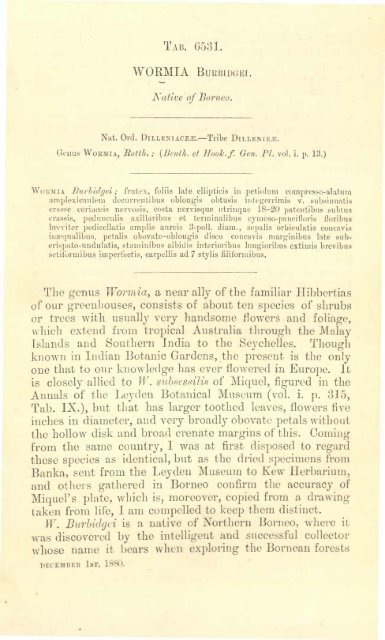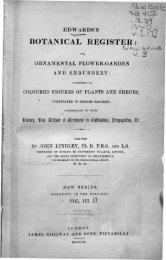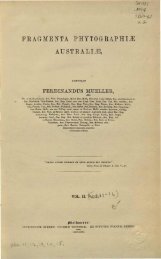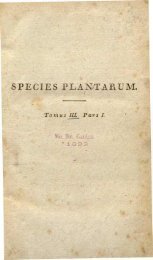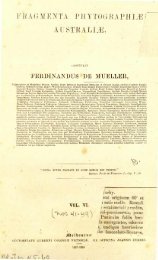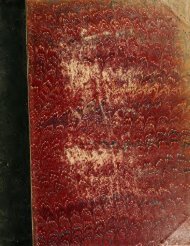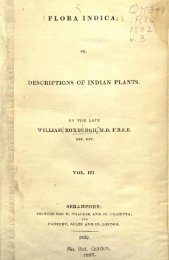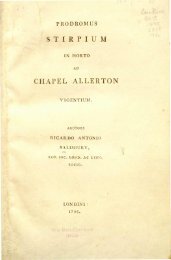Botanical Magazine 106 - 1880.pdf - hibiscus.org
Botanical Magazine 106 - 1880.pdf - hibiscus.org
Botanical Magazine 106 - 1880.pdf - hibiscus.org
You also want an ePaper? Increase the reach of your titles
YUMPU automatically turns print PDFs into web optimized ePapers that Google loves.
TAB. 6531.<br />
WORMIA BUEBIDüEI.<br />
Native of Borneo.<br />
Nat. Ord. DILLENIACE^.•Tribe DiLLKNie^.<br />
Genus WOBMIA, Bottb. ; [Bentk. et Hook. f. Gen. PL vol. i. p. 13.)<br />
WOBMIA Burbidgei s frutex, foliis late ellipticis in petiolum compresiio-alatum<br />
amplexicaulem decurrentibua oblongis obtusis mtegerrimis v. Babsinuatis<br />
crusse coriaceis nervosis, costa ncrvisque utrinque 18-20 patentabas sub tus<br />
ciuasis, pedunculis axillaribus et terminalibus cyraoso-paucifloris floribns<br />
bi-fvitev pedicellatis amplis anreis 3-poU. diam., Bepalis orbicolatis concavis<br />
ina'qualibus, petalis obovato-oblongis disco concavis marginibus late sub-<br />
crispato-nnäulatis, staminibus albidis interioribus longioribus extimis brevibas<br />
setitbrmibus imperfectis, carpellis ad 7 stylis filiibnnibus.<br />
The genus Wormia, a near ally of the familiar Hibbertias<br />
of our greenhouses, consists of about ten species of shrubs<br />
or trees with usually very handsome flowers and foliage,<br />
which extend from tropical Australia through the Malay<br />
Islands and Southern India to the Seychelles. Though<br />
known in Indian Botanic Gardens, the present is the only<br />
one that to our knowledge has ever flowered in Europe. It<br />
is closely allied to Tf\ subsessilis of Miquel, figured in the<br />
Annals of the Leyden <strong>Botanical</strong> Museum (vol. i. p. 315,<br />
Tab. IX.), but that has larger toothed leaves, flowers five<br />
inches in diameter, and very broadly obovate petals without<br />
the hollow disk and broad crenate margins of this. Coming<br />
from the same country, I was at first disposed to regard<br />
these species as identical, but as the dried specimens from<br />
Banka, sent from the Leyden Museum to Kew Herbarium,<br />
and others gathered in Borneo confirm the accuracy of<br />
Miquel's plate, whicli is, moreover, copied from a drawing<br />
taken from life, I am compelled to keep them distinct.<br />
W. Burbidgei is a native of Northern Borneo, where it<br />
was discovered by the intelligent and successful collector<br />
whose name it bears when exploring the Bornean forests<br />
DEC'EMBEK 1ST, 1880.


